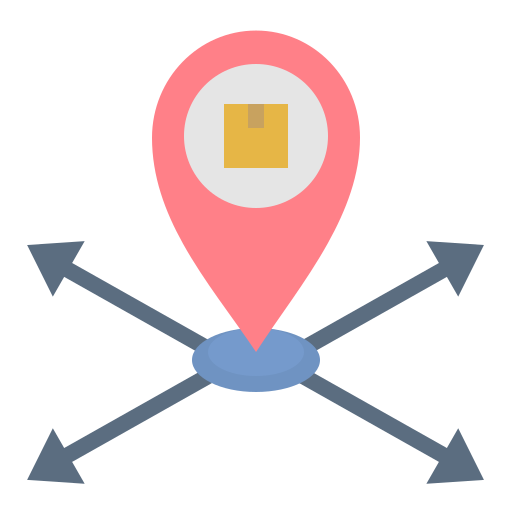Polygon (POL)
Polygon (POL)
Number of casinos: 25
Cryptocurrency Code: POL
Website: polygon.technology
Whitepaper:
Max Supply: --
The Origins of Polygon (ex-Matic)
The Evolution of Polygon: From Matic to a Blockchain Powerhouse
The Genesis of Matic
Polygon's journey begins with the launch of Matic, a project aimed at solving the pressing scalability challenges faced by the Ethereum blockchain. In the early stages of blockchain development, Ethereum, while pioneering in the world of smart contracts and decentralized applications (dApps), was burdened by its scalability limitations. As the network grew in popularity, Ethereum's transaction
speeds slowed significantly, and users were faced with increasingly high gas fees. This was particularly problematic for developers who sought to build on the Ethereum platform, but were hindered by these performance bottlenecks.
The team behind Matic recognized the critical need for a solution that would allow Ethereum to scale more effectively. Their solution was a Layer 2 scaling mechanism designed to improve the throughput and reduce the costs of transactions, without compromising the security or decentralization of the network. The Matic network was built to process transactions off the main Ethereum chain through a series of sidechains, enabling faster and more cost-efficient operations while still relying on the Ethereum network for ultimate security.
The Rise to Polygon
As the Matic network grew, so did its aspirations. The success of the Matic platform and the increasing adoption of its technology revealed that a broader vision was required—one that could cater not just to Ethereum, but to the wider blockchain ecosystem. Thus, Matic underwent a significant rebranding in 2021 and became Polygon. This shift marked a strategic move toward positioning the platform as a more extensive multi-chain ecosystem rather than a singular scaling solution.
The decision to rebrand to Polygon was rooted in the realization that blockchain technology needed to evolve beyond simple scalability. To truly support the growing demand for decentralized applications, the infrastructure needed to be interoperable, secure, and highly scalable. Polygon's new vision encompassed the creation of a framework for connecting multiple blockchain networks, allowing them to work in tandem and share resources seamlessly. This would address not only Ethereum's scalability issues but also provide a platform that could be utilized by a wide range of blockchain ecosystems, each with their own unique use cases.
The Expanding Ecosystem
Polygon’s evolution from a single scaling solution to a multi-chain ecosystem was accompanied by significant technical developments. The platform began integrating various Layer 2 solutions, such as Optimistic Rollups and zk-Rollups, which further enhanced transaction speeds and reduced costs. Polygon also focused on bridging the gap between Ethereum and other blockchain networks, allowing for cross-chain interoperability. This was a critical step in ensuring that developers could build decentralized applications that were not restricted to a single blockchain, but could instead tap into the strengths of multiple networks.
As the Polygon ecosystem grew, it began attracting a wide array of developers and projects, particularly in the decentralized finance (DeFi) and non-fungible token (NFT) spaces. By offering an environment that supported high-speed, low-cost transactions, Polygon became an attractive alternative for developers who needed scalability and efficiency without sacrificing security. This also allowed projects to experiment and scale more rapidly, opening up new possibilities for innovation in the blockchain space.
The Path Forward
Today, Polygon stands as a blockchain powerhouse, contributing significantly to the wider adoption of decentralized technologies. Its transformation from Matic into a multi-chain ecosystem is a testament to the project's ability to adapt and grow with the rapidly evolving needs of the blockchain community. As more projects continue to build on Polygon, the platform is poised to play a central role in shaping the future of decentralized technologies. By providing a scalable, secure, and interoperable solution, Polygon is ensuring that blockchain can meet the demands of a broader audience, ranging from small developers to large enterprises.
Looking ahead, Polygon's focus is on expanding its ecosystem even further. With the continuous growth of the decentralized finance sector, the rise of Web3 applications, and the growing interest in blockchain technology across industries, Polygon is well-positioned to be at the forefront of this transformation. The network's evolution continues, with new innovations, collaborations, and use cases constantly being explored, ensuring that Polygon remains a critical player in the blockchain landscape for years to come.
More Hot Polygon Casinos
As the popularity of Polygon grows, more online casinos are embracing its fast, secure, and cost-effective blockchain technology, offering players exciting new opportunities to engage with decentralized platforms.
The Popularity of Polygon
Polygon's rise to prominence within the blockchain ecosystem is a testament to its ability to address some of the most pressing challenges in the industry. Originally designed as a scaling solution for Ethereum, Polygon has since expanded into a multi-chain platform that has captured the attention of developers, investors, and users alike. The platform’s rapid adoption is driven by its ability to offer a more scalable, cost-effective, and interoperable solution compared to many other blockchain networks. Polygon's success can be attributed to its robust technological framework, which allows for faster transactions, lower fees, and seamless cross-chain compatibility, making it a highly attractive option for decentralized applications (dApps) and decentralized finance (DeFi) projects.
As Ethereum’s network began to experience congestion, Polygon emerged as the solution to Ethereum’s scalability issues. The platform’s ability to provide a Layer 2 scaling solution allowed developers to continue building on Ethereum without being bogged down by slow transaction speeds and high costs. This position as a bridge between Ethereum and other blockchains has made Polygon indispensable to the wider blockchain ecosystem. Its ability to connect multiple blockchain networks under a single framework has solidified its role as a leader in the multi-chain ecosystem space.
The growing demand for blockchain solutions that are both efficient and scalable has led to an influx of projects migrating to or integrating with Polygon. This is particularly evident in sectors such as DeFi, where speed and transaction costs are of paramount importance. Polygon has quickly become a go-to choice for DeFi applications, offering developers the tools to build decentralized finance solutions without the constraints that come with Ethereum’s mainnet. Beyond DeFi, Polygon has also made strides in the NFT space, providing a more affordable platform for creators and collectors to mint and trade digital assets.
Polygon's growing popularity is not only reflected in its technical advancements but also in the increasing number of partnerships and integrations with major players in the industry. The platform has attracted investments from leading venture capital firms and has secured collaborations with high-profile brands, including major gaming companies and financial institutions. These strategic partnerships further cement Polygon’s place in the blockchain space and pave the way for its continued expansion into new sectors.
Looking ahead, the future of Polygon seems even brighter. As more users and developers recognize the benefits of using Polygon, the platform is poised to continue its rapid growth. With its ever-expanding ecosystem, strong developer support, and commitment to innovation, Polygon is set to play a pivotal role in shaping the future of blockchain technology, ensuring that it remains one of the most popular and widely used platforms in the space.
News and Articles for Polygon
Polygon in the Spotlight: Latest News and Updates
No results were found!
How Has Polygon Grown during the Years?
Since its inception, Polygon has experienced remarkable growth, transitioning from a scaling solution for Ethereum (originally known as Matic) to a leading multi-chain blockchain platform. Its evolution has been marked by continuous improvements in scalability, security, and interoperability, making it a key player in the blockchain space. Polygon’s focus on developer-friendly tools, low transaction fees, and seamless integration with other blockchain networks has contributed to its widespread adoption. Today, the platform is a vital ecosystem that supports a growing number of decentralized applications (dApps), decentralized finance (DeFi) protocols, and non-fungible token (NFT) projects.
- Launch of Matic (2017)
Polygon was originally launched as Matic Network in 2017 with the goal of addressing Ethereum’s scalability challenges. Its foundational technology was based on Layer 2 solutions, using sidechains to improve transaction speeds and reduce fees. The early focus was on enabling faster and cheaper transactions on Ethereum. This simple yet effective solution quickly garnered attention, marking the beginning of Matic’s journey as a promising Ethereum scaling solution. - Rebranding to Polygon (2021)
In 2021, Matic rebranded to Polygon, expanding its vision to become a multi-chain ecosystem. This change reflected the platform’s ambition to support a broader range of blockchain networks, beyond just Ethereum. With the rebranding, Polygon introduced new technologies such as zk-Rollups and Optimistic Rollups to further improve scalability. The shift to Polygon solidified its role as a key player in the blockchain space, driving adoption across various industries. - Polygon’s DeFi and NFT Integration (2021–2022)
Polygon saw rapid adoption in the decentralized finance (DeFi) and non-fungible token (NFT) spaces, thanks to its low-cost transactions and fast processing speeds. Major DeFi protocols, including Aave, Sushiswap, and Uniswap, integrated with Polygon to provide users with more affordable alternatives to Ethereum’s high gas fees. The NFT market also flourished on Polygon, as creators and collectors embraced the platform for minting and trading digital assets. These integrations helped establish Polygon as a go-to platform for decentralized applications. - Strategic Partnerships and Investments (2021–Present)
Over the years, Polygon has formed strategic partnerships with major corporations, including collaborations with global enterprises like Disney and Reddit. Additionally, the platform has received significant investments from venture capital firms, allowing it to expand its ecosystem. These partnerships have played a crucial role in Polygon’s widespread adoption, boosting its credibility in the blockchain and technology sectors. As Polygon continues to grow, more high-profile collaborations are expected to propel its expansion into new markets.
| Year | Price (USD) | % Change from Previous Year |
|---|---|---|
| 2017 | $0.022 | N/A |
| 2018 | $0.021 | -4.5% |
| 2019 | $0.014 | -33.3% |
| 2020 | $0.013 | -7.1% |
| 2021 | $2.70 | +20,615% |
| 2022 | $1.14 | -57.78% |
| 2023 | $0.95 | -16.67% |
| 2024 (YTD) | $1.21 | +27.37% |
Polygon's continuous innovation and strategic partnerships have solidified its position as a leading force in the blockchain space, offering developers and users alike a fast, secure, and scalable platform with immense potential for future growth.
What are the Best Platforms to Trade with Polygon?
Polygon (POL) is widely supported on many top cryptocurrency exchanges, offering traders a variety of platforms to buy, sell, and trade the asset with ease. These platforms provide different features such as low fees, advanced trading tools, high liquidity, and user-friendly interfaces, making them ideal for both beginners and experienced traders. Whether you prefer centralized exchanges with robust security or decentralized platforms offering greater privacy and control, there are several options to choose from for trading Polygon.
| Platform | Type | Key Features | Fees |
|---|---|---|---|
| Binance | Centralized | High liquidity, a wide range of trading pairs, advanced tools | Low fees (0.1%) |
| Coinbase | Centralized | User-friendly interface, educational resources | 1.49% per transaction (varies) |
| Kraken | Centralized | High security, futures trading, staking options | 0.26% fee for spot trading |
| KuCoin | Centralized | Wide range of assets, margin trading | 0.1% taker and maker fee |
| Uniswap | Decentralized | No sign-up required, supports DeFi trades | Gas fees (varies) |
| SushiSwap | Decentralized | Decentralized, low fees, liquidity pools | Gas fees (varies) |
| Gate.io | Centralized | Diverse crypto pairs, spot and margin trading | 0.2% trading fee |
How to Open an Account on Binance and Find Your Polygon Address
Step01
Visit Binance Website
Go to the official Binance website and click on the Register button at the top-right corner of the homepage.
Step02
Create Your Account
Enter your email address and choose a strong password for your new Binance account. Alternatively, you can register using your mobile phone number. Click Create Account after filling in the details.
Step03
Complete Identity Verification
Binance requires identity verification to comply with global regulations. Submit the necessary personal information and documents to verify your identity. This step might take a few minutes to process.
Step04
Activate Two-Factor Authentication (2FA)
To enhance your account's security, enable two-factor authentication. This step adds an extra layer of protection by requiring a code sent to your mobile device each time you log in.
Step05
Deposit Funds into Your Account
Once your account is set up and verified, deposit funds into your Binance wallet. You can deposit fiat through bank transfer or credit/debit cards, or deposit cryptocurrency from another wallet or exchange.
Step06
Navigate to the Wallet Section
After logging into Binance, click on Wallet in the top navigation bar, then select Fiat and Spot from the dropdown menu. This will open your wallet page where you can manage your assets.
Step07


Find Your Polygon (POL) Address
In the Fiat and Spot section, search for Polygon (POL) or MATIC. Once found, click on the Deposit button. Binance will display your unique Polygon wallet address, which you can use to receive Polygon tokens. Make sure to copy the address accurately to avoid any mistakes.
What Casino Games Can I Play with Polygon?
Polygon (POL) has increasingly gained popularity in the world of online casinos, with many platforms accepting it as a viable payment option. Players can use Polygon to engage in a variety of exciting casino games, including traditional favorites like slots, blackjack, roulette, and poker. Additionally, many decentralized casinos offer unique blockchain-based games where players can earn rewards in Polygon. These games are designed to take advantage of Polygon’s fast transaction speeds and low fees, ensuring a seamless and efficient betting experience. Whether you're a fan of table games, slots, or even live dealer experiences, you’ll find plenty of options where you can wager and win with Polygon, while enjoying the security and transparency provided by blockchain technology.
| Crypto currency | Sym | Casino | Slots | Roulette | Baccarat | Poker | Blackjack | Live casino | eSports | Sports |
|
|
polygon-matic |
Interesting Facts About Polygon
Fascinating Insights into Polygon’s Growth and Impact
Polygon (formerly known as Matic) has solidified its position as a transformative force in the blockchain ecosystem, offering innovative solutions to some of the most significant challenges that have historically hindered the Ethereum network, particularly in terms of scalability and high transaction fees. By leveraging its advanced Layer 2 technology, Polygon enables faster, more affordable transactions while maintaining the security and decentralization of Ethereum. This combination of low transaction fees, quick processing speeds, and a growing ecosystem of decentralized applications (dApps), decentralized finance (DeFi) projects, and NFTs has made it an increasingly attractive platform for developers, traders, and crypto enthusiasts worldwide. As Polygon continues to evolve, its ecosystem is expanding into a wide array of industries, making it a key player in the blockchain space. Its ability to seamlessly integrate with Ethereum and other networks positions it for long-term success, as it addresses the scalability concerns faced by various blockchain applications. With its strong focus on decentralization, security, and accessibility, Polygon has become a go-to platform for developers looking to build scalable dApps while ensuring low-cost solutions for users. For individuals and organizations seeking a reliable, efficient, and future-proof blockchain platform, Polygon offers the ideal combination of scalability, security, and cutting-edge technology, making it a valuable asset in the rapidly evolving crypto landscape.
A Scaling Solution for Ethereum
Polygon was originally created to help scale the Ethereum network, which was often plagued by slow transaction times and high fees. By implementing a Layer 2 solution, Polygon significantly enhances Ethereum's speed and efficiency, making it more accessible for decentralized applications (dApps). The technology behind Polygon makes it one of the most effective solutions for Ethereum’s scalability issues, drawing significant attention from developers and investors alike. As Ethereum grows, so does the importance of Polygon in maintaining its effectiveness.
Formerly Known as Matic
Polygon was initially called Matic Network before rebranding to its current name in 2021. The rebrand aimed to better reflect its ambition to become a multi-chain scaling solution for Ethereum and other blockchain networks. Despite the name change, the underlying technology remains focused on improving scalability and reducing transaction costs. This rebranding has been pivotal in positioning Polygon as a leading platform in the blockchain space.
Polygon’s Ecosystem is Expanding
Over the years, Polygon has integrated with a wide array of blockchain projects, including DeFi platforms, gaming apps, and NFTs. This expansion has allowed the Polygon ecosystem to grow significantly, supporting a diverse range of use cases. As more projects adopt Polygon’s technology, its influence continues to spread across industries. This broad integration ensures Polygon’s relevance and future potential as a multi-chain platform.
Polygon's Energy Efficiency
Polygon’s Proof-of-Stake (PoS) consensus mechanism offers a more energy-efficient alternative to traditional Proof-of-Work (PoW) systems, which are often criticized for their environmental impact. By using PoS, Polygon ensures that transactions are validated with much lower energy consumption, making it a greener choice for developers and users. This commitment to sustainability has garnered support from eco-conscious investors and participants in the crypto space. As energy consumption concerns grow globally, Polygon’s eco-friendly approach may become even more significant.
CasinoLandia's Conclusion About Polygon
Polygon (formerly known as Matic) has proven itself to be a transformative force in the blockchain space, offering significant solutions to the scalability and high-cost issues that have historically plagued Ethereum. Its low transaction fees, fast speeds, and robust ecosystem have made it an attractive option for developers, traders, and crypto enthusiasts alike. As the network continues to evolve and integrate with various sectors such as decentralized finance, gaming, and NFTs, its potential for further growth is undeniable. For users seeking a reliable and efficient platform for their crypto needs, Polygon provides both security and scalability, making it a valuable asset for the future of blockchain technology.


Author
Alexander Yanev | Content Writer










